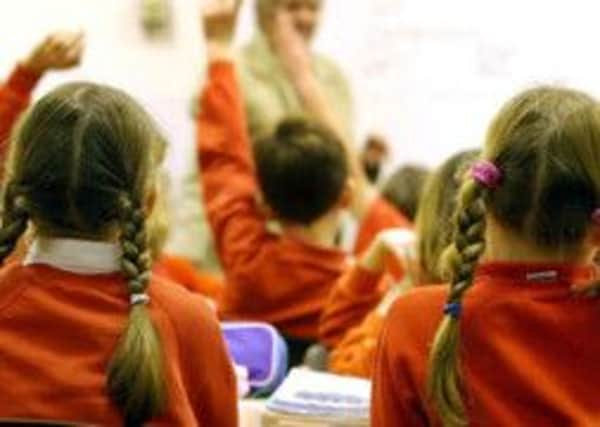Exclusive: 57 schools in region fail to hit GCSE targets


A Yorkshire Post analysis of the most recent exam results shows that the proportion of all academies below floor targets in the region is almost the same as other state secondary schools.
There were 19.4 per cent of secondary academies below floor targets compared with 18.7 per cent of other state schools.
Advertisement
Hide AdAdvertisement
Hide AdCritics of academies say this is because the programme has not made any impact on standards.
Henry Stewart of the Local Schools Network campaign group said the policy was being driven by ideology and not evidence.
However education select committee chairman Graham Stuart MP said that it was too soon to assess the programme and difficult to compared the performance of academies and other state schools based on exam results. His own committee produced a report this year saying it was impossible to say whether academies had been a force for good.
The analysis of last summer’s exam results also shows that Yorkshire has a higher proportion of state schools failing to hit the GCSE benchmark than the rest of the country.
Advertisement
Hide AdAdvertisement
Hide AdIt comes as school and civic leaders in the county prepare to hold a summit tomorrow to discuss ways of turning Yorkshire into a world leader in education.
The event in Leeds is being led by the region’s 15 education authorities coming together to raise standards. Leeds City Council’s executive member for Children’s Services Coun Judith Blake said it was a call to action.
The latest GCSE tables and the most recent Ofsted figures show the extent to which Yorkshire lags behind the rest of the country.
New Ofsted tables show that of the 2,145 schools inspected in the region more than 500 were rated as less than good.
Advertisement
Hide AdAdvertisement
Hide AdIn total 347 were outstanding (16 per cent) 1,283 were good ( 60 per cent) 453 require improvement (21 per cent) and 62 ( three per cent) are inadequate. This means 24 per cent of Yorkshire schools are considered to be less than good - almost one in four and higher than anywhere else in the country.
Analysis of GCSE results show that 57 Yorkshire secondary schools failed to hit Government targets. Schools are below floor targets if they fail to ensure 40 per cent of pupils achieve five good GCSEs including English and maths and pupils do not keep up with the average level of progress in these two core subjects
Mr Stuart said comparing the performance of academies and other schools was difficult as there are two types of academies - converters which were typically good or outstanding state schools or sponsored academies which were often schools which had been struggling and turned into an academy with new leadership.
The tables show that just nine out of 96 converter academies in Yorkshire were below the floor target last summer while 17 of the 44 sponsored secondary
academies were below the floor.
Advertisement
Hide AdAdvertisement
Hide AdCoun Blake said the number of Yorkshire schools below the floor target showed the need for a summit to raise standards in the county.
However she added: “It has to be remembered that in the GCSE tables this year it was a pupil’s first attempt and not their final grade which counted towards league tables. We have utmost respect for schools which put the needs of their pupils above their own league table rankings.”
Commenting on the academies programme a DfE spokesman said: “Since 2010, our schools have been transformed with one million more children now being taught in good or outstanding schools.
“Academies have played a vital role in this transformation by promoting new ideas and approaches, and helping to drive up standards in other local schools as a result.
Advertisement
Hide AdAdvertisement
Hide Ad“They have also created greater choice and are more accountable to parents and communities who have a much greater opportunity to hold them to account than has been the case with schools in the past. The interests of parents, pupils and communities are at the heart of the programme.”